# Rule-based replication (QoS)
Quality of Service (QoS) is used to manage file replica distribution and redundancy between providers supporting a space.
This guide is dedicated to non-admin users who would like to utilize QoS to manage the distribution of their data. Consider reading the counterpart documentation for admins for information on the proper configuration of the Oneprovider service regarding QoS.
# Basics
QoS mechanisms are based on the continuous processing of QoS requirements. A requirement is essentially a rule defining the desired data redundancy (replica count) and how to determine the placement of replicas (QoS expression).
Each file or directory can have any number of requirements — in the case of directories, the requirement is applied to all its files and subdirectories, recursively.
If required, data transfers are automatically triggered to satisfy the QoS requirements — remote changes made to file content are automatically reconciled. File replicas corresponding to QoS requirements are protected from eviction.
Removing a QoS requirement does not automatically remove the replicas that were created during its lifetime, but they are no longer protected.
# QoS expression
QoS expressions are a declarative way of specifying desired storage parameters in a unified format. They are used to determine the replica placement — the target storage backends where the replicas of the data will be stored. The expressions refer to storage backend parameters that are assigned by Oneprovider admins.
An expression is a set of one or more operands, each referring to one storage backend's parameter.
An operand is in form key {comparator} value, where {comparator} is one of <, >, <=, >=, =,
e.g. key = value. One exception from this is the single-worded, built-in operand anyStorage.
If any comparator other than = is used, only numeric values are allowed.
Operands are processed left-to-right and can be combined:
&— expression matches if both operands match,|— expression matches if any of the two operands matches,\— expression matches if the left-hand side operand matches and the right-hand side operand does not.
Example QoS expressions:
geo=PL— storage backends in Poland,timeout < 8— storage backends with timeout parameter set to less than 8,timeout = 8— storage backends with timeout parameter set to exactly 8,geo=PL & type=disk— storage backends of disk type in Poland,geo=PL | type=disk— storage backends in Poland or storage backends of disk type anywhere,anyStorage \ type=disk— storage backends that are not of the disk type.
Use parentheses to group operands that should be evaluated together, e.g.:
geo=FR | (geo=PL & type=disk)— storage backends in France or storage backends of disk type in Poland,(geo=PL \ type=disk) | (geo=FR & type=disk)— storage backends in Poland that are not of disk type or storage backends in France that are of disk type.
# QoS requirement
A QoS requirement consists of a QoS expression and the target replica count. Storage backends matching the expression are selected for data replication in a continuous re-evaluation process until the target replica count is satisfied. If there are more matching backends than the target replica count, a random subset is selected.
The replicas originating from the evaluation of QoS requirements are automatically managed — protected from eviction and reconciled upon changes to the file content.
Fulfillment of a QoS requirement is indicated by its status:
fulfilled— the target replica count has been created on the matching storage backends and their contents are up-to-date (remote changes have been reconciled).pending— the requirement is not yet fulfilled — data replication is still ongoing.impossible— there are not enough storage backends matching the expression to meet the target replica count, hence the requirement cannot be satisfied — unless the list of supporting storage backends or their parameters change.
# Web GUI guide
To manage QoS requirements, choose the Quality of Service action from the file/directory's context menu in the file browser.
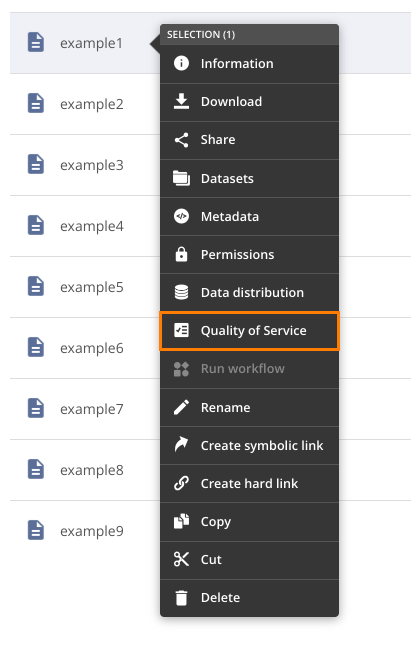
The requirements can be put down using a visual block-based expression editor. These requirements are evaluated against the assigned to different supporting storage backends to determine where the replicas should be stored.
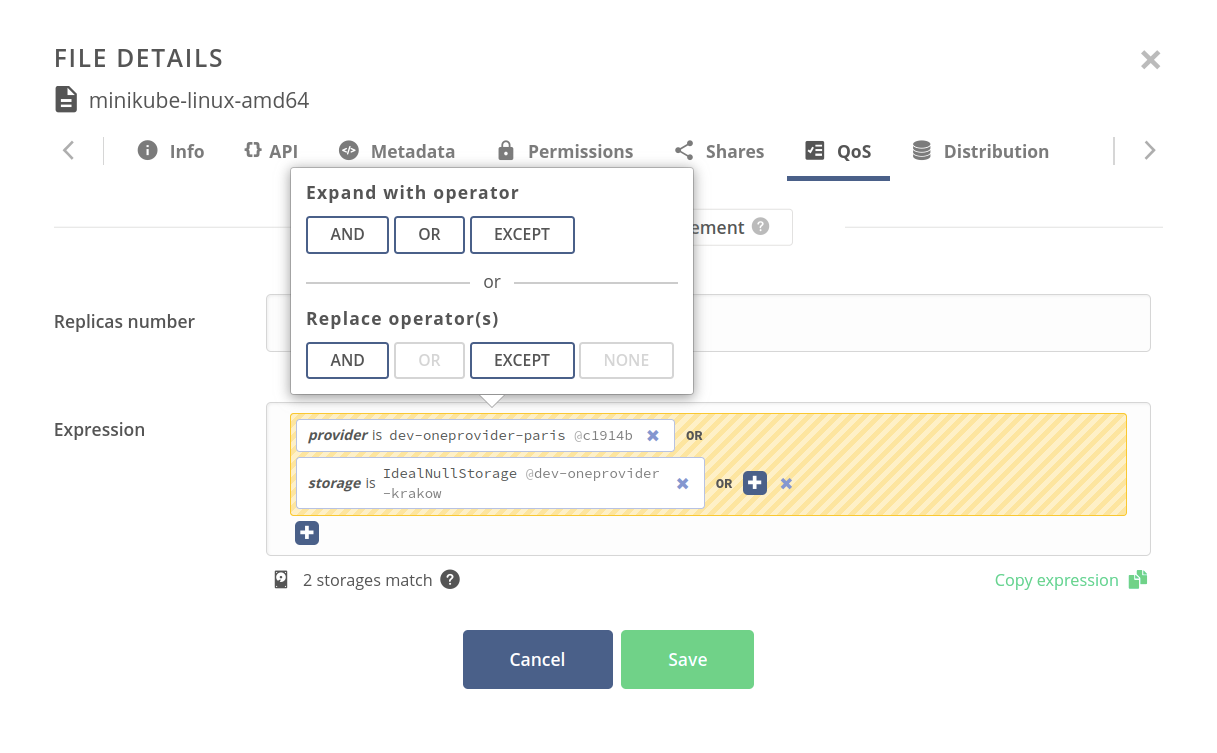
Below the requirement, there is information about which storage backends match the requirement and an action that copies the expression in textual form, to be reused when creating a new requirement or using the REST API.
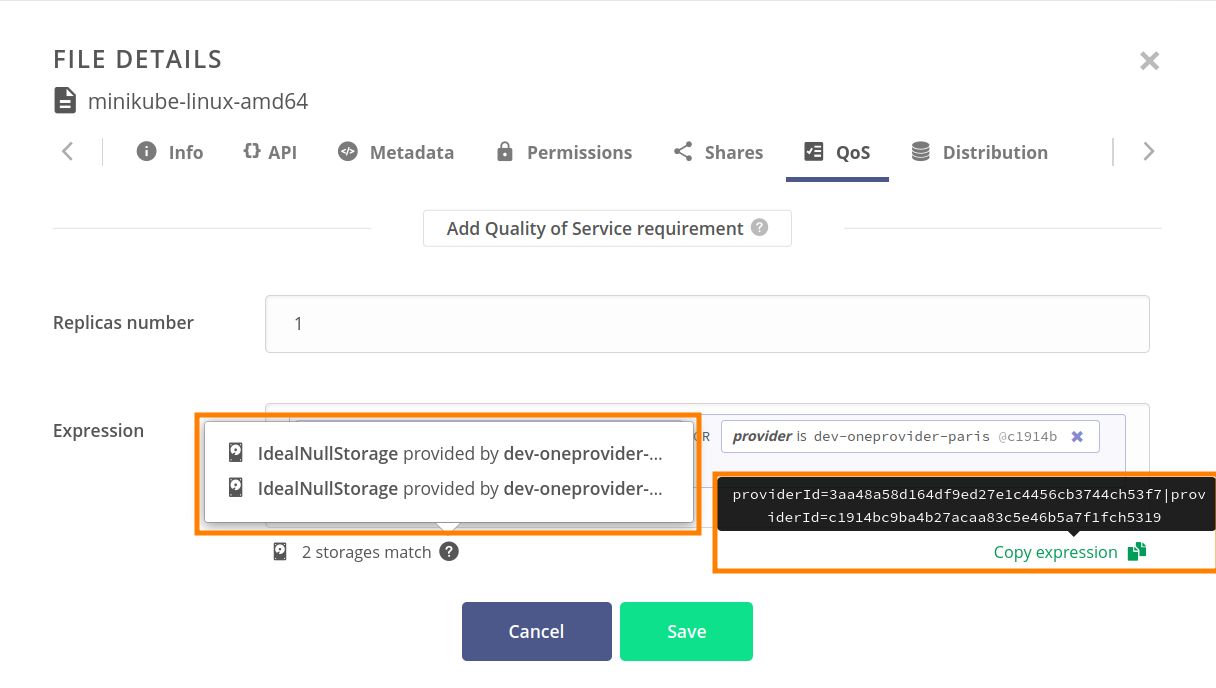
Expressions can be entered in the textual form. They are converted to block form upon confirmation and then can be further edited.

If the selected files have any QoS requirements defined, they are displayed on the list along with their status of fulfillment, matching storage backends and other information. It is possible to remove selected QoS requirements unless they are inherited from any parent directory.
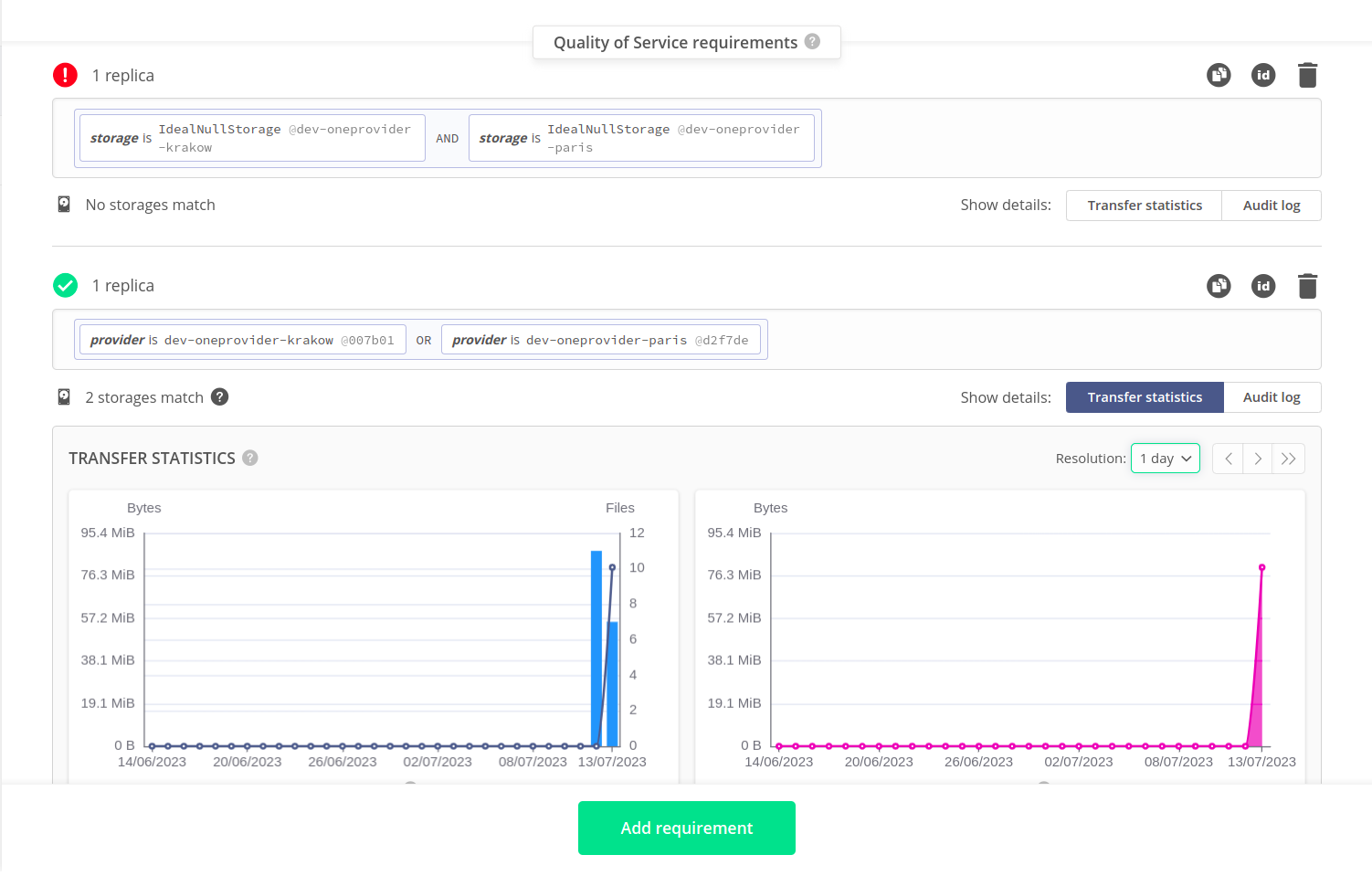
After expanding the row for a requirement, you can examine its status, transfer statistics, and audit log.
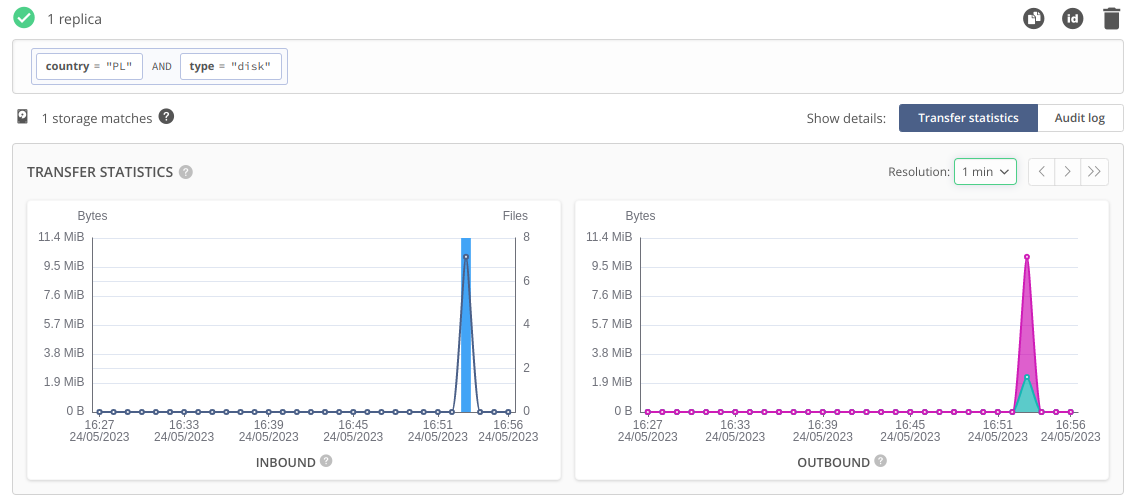
In the charts, you can see the total number of files and the number of bytes that were transferred in order to fulfill the requirement.
NOTE
The QoS charts and audit logs are presented as seen from the point of view of the currently selected provider.
# INBOUND chart
Filesrepresent the number of regular files that were processed to fulfill the QoS requirement. If a single file is transferred multiple times (e.g. when the file content changes multiple times on a remote provider), each of these transfers contributes towards this counter. Empty files also increase the counter.Bytesrepresent the number of bytes that have been written to the local storage backends to fulfill the QoS requirement.
# OUTBOUND chart
Bytesrepresent the number of bytes that have been transferred from remote storage backends. The sum of these values is equal to theBytesvalue shown in theINBOUNDchart.
# Using REST API
You can interact with the QoS using the REST API. Below are some links to the REST API documentation of commonly used operations:
| Operation | Link to the API docs |
|---|---|
| Add new QoS requirement | API (opens new window) |
| Get QoS requirement details | API (opens new window) |
| Remove QoS requirement | API (opens new window) |
| Get QoS summary for a file | API (opens new window) |
| Evaluate QoS expression | API (opens new window) |
| Get QoS audit log | API (opens new window) |
← Data transfers Shares →